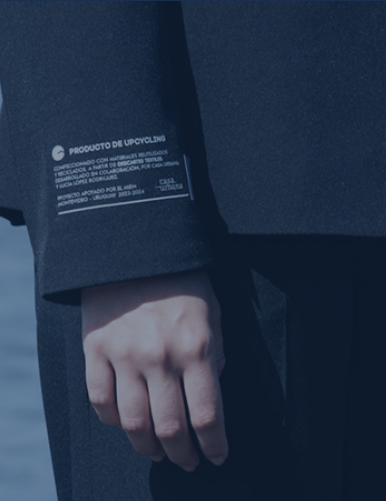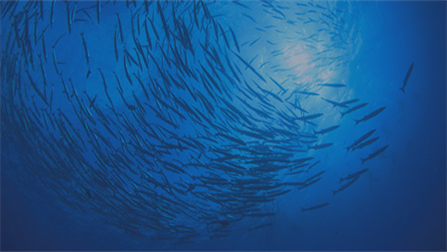Weaving Sustainability into Apparel: Casa Urbana’s Circular Textile Waste System
Start Reading

1. Company at a Glance
In this case study, we will explore how Casa Urbana has designed and implemented a circular textile waste management system since 2021 to prevent and valorize solid textile waste (STW), fostering sustainable production and consumption in Uruguay’s apparel industry.
Apparel
Industry
2014
Founded
Uruguay
Headquarter
12
Number of Employees
2. The Challenge
Casa Urbana became aware of the environmental and social impact caused by the waste generated during its production processes. A significant portion of leftover materials—such as fabric scraps and unused uniforms—was ending up unused or discarded. Rather than letting these materials go to waste, the company saw an opportunity to give them a second life by transforming them into new products.
3. The Action
Building a collaborative and circular system from the ground up:
Declaring Sustainability as a Non-Negotiable Value
Casa Urbana began by making a strategic and foundational decision: to place sustainability at the core of its business model, even if that meant losing clients or slowing short-term growth. The company chose to prioritize long-term impact—focusing on responsible production, fair local employment, and environmental commitment—as essential pillars for its future and for transforming the textile industry.
Forming Alliances With Experts in Circular Economy and Social Impact
Understanding that it could not achieve systemic change alone, Casa Urbana actively sought collaboration. In 2022, the company partnered with industrial designers and researchers from FADU University, bringing in both technical expertise and fresh academic perspectives to co-develop solutions grounded in circular design and social responsibility.
Giving New Life to Post-Industrial Waste and Deadstock Materials
Instead of discarding surplus materials (deadstock), Casa Urbana offers clients the option to upcycle them into new products—such as uniforms or accessories—for example through a process called remanufacturing.
Post-industrial waste is also redirected to external initiatives, including sportswear manufacturing companies, rural women's cooperatives, and cultural centers in other regions of the country.
Designing and Launching Pilot Projects for Real-World Validation
Casa Urbana tested some additional projects through small-scale pilot collections:
- Cereus: a zero-waste collection designed to use 100% of the fabric
- Venusia: garments made from deadstock uniforms
- Cortex: a new textile created from cutting waste and plastic packaging
These pilots allowed the team and partners to gain hands-on experience, refine techniques and generate tangible examples to build credibility and inspire others.
Training and Raising Awareness Inside and Outside the Company
The company delivered ongoing training through workshops, talks, and customized learning sessions aimed at both employees and external production partners. Casa Urbana also offers free upcycling workshops in alliance with key stakeholders for groups of women garment workers and shares open-source designs to support small, independent producers.
Securing Financial Resources to Support the Transition
To fund its sustainability efforts, Casa Urbana pursued external funding opportunities and created an internal Sustainability Fund. A small percentage of the sale price of each garment (around 0.8%, depending on the item) is allocated to this fund, ensuring consistent support for circular initiatives and allowing the company to scale its impact over time.
Engaging Clients and End Users in the Change Process
Casa Urbana recognizes that real change depends on the involvement of clients and users. The company invests in communication, awareness-building, and transparency to help clients understand the environmental and social value behind each product. While cost remains a concern for some, growing numbers of clients are choosing Casa Urbana’s circular solutions due to their proven impact and clear messaging.
Sharing Knowledge and Open-Sourcing Its Model
Committed to wider systemic change, Casa Urbana shares its learnings through public talks, documentation, and by making some of its designs open-source. This approach enables other producers—particularly small or community-based groups—to replicate or adapt the model, amplifying the reach and value of circular practices across the sector.
4. Overcoming Barriers
Financial:
High local production costs were addressed by prioritizing dignified work and client sensitization.
Technical:
Lack of trained staff and suppliers was mitigated through training and pilot projects, though logistics remain unresolved.
Cultural:
Limited environmental awareness was countered with persistent education and outreach efforts.
5. Impacts & Results
Waste Valorization:
Casa Urbana has achieved consistent annual increases in both the volume and diversity of textile waste being valorized (531kg in 2024 compared to 290kg in 2023).
Client Engagement:
Participation in lower-impact alternative actions rose to 20% of clients last year, a notable increase from 5% in prior periods.
Project Viability:
Over time, several sustainability-driven projects have evolved from pilot initiatives into viable, self-sustaining endeavors that no longer require external funding.
Team Commitment:
Internally, the initiative has led to stronger alignment and motivation among employees engaged in this purpose-driven work.
Knowledge Sharing and Industry Influence:
One of Casa Urbana’s most impactful outcomes has been the design and open dissemination of its circular system, which has allowed the company to establish a distinctive position within the industry.
6. Key Lessons Learned
Collaboration is essential to circular transformation
Circular systems cannot be developed in isolation. Engaging all stakeholders—from cutters and sewers to designers, clients and finance teams—has proven critical in identifying barriers, co-creating solutions and building long-term commitment. Collaborative processes foster a deeper emotional connection and shared ownership of the initiative.
Early and consistent data systematization is crucial
Tracking process times, waste volumes, and material flows from the beginning would have streamlined operations and enabled more accurate evaluations over time. Well-organized data supports better analysis, clearer documentation, and the development of replicable models.
Flexibility is a survival skill in dynamic contexts
The circular economy ecosystem is constantly evolving. Maintaining flexibility and building contingency plans has allowed Casa Urbana to adapt and continue progressing despite external changes.
Diversity in partnerships and project scales builds resilience
Combining short-term, small-scale initiatives with long-term, large-scale projects has created a robust and adaptable system. Engaging a wide range of actors brings multiple perspectives and reduces dependency on any single partnership or strategy.
Sharing knowledge amplifies impact
Recording and sharing learnings is key to scaling circular practices. Casa Urbana believes that openly sharing tools, methods, and results allows others to adapt and improve upon them, expanding the reach and effectiveness of sustainable innovation across the industry.
"In the coming years, we will continue building precedents, optimizing our processes, and strengthening the financial sustainability of the system. Our greatest challenge ahead is to scale it—to ensure that 100% of our textile waste is truly valorized.”
Sandra Moreira, Co-founder, Casa Urbana
7. Resources
Casa Urbana has been a committed participant in several UN Global Compact initiatives:
Recommended UN Global Compact resources available to support your journey:
Disclaimer: This case example is intended strictly for learning purposes and does not constitute an endorsement of the individual companies by the UN Global Compact.


